Tiny Turtle by Susan Casson
14th May 2021
Stumpwork is a technique that was developed in England in the 17th Century. Employing various methods to achieve a raised effect, the original stumpwork designs that adorned caskets, furniture, canopies and clothing, often depicted mythical or biblical scenes.

Inherent in many of these scenes were various animals. When you look at pictures of historical stumpwork, you’ll discover lions and stags, butterflies and birds, unicorns and griffins. Indeed, animals have remained a favourite subject even in modern stumpwork designs as they borrow and develop from their historical predecessors.
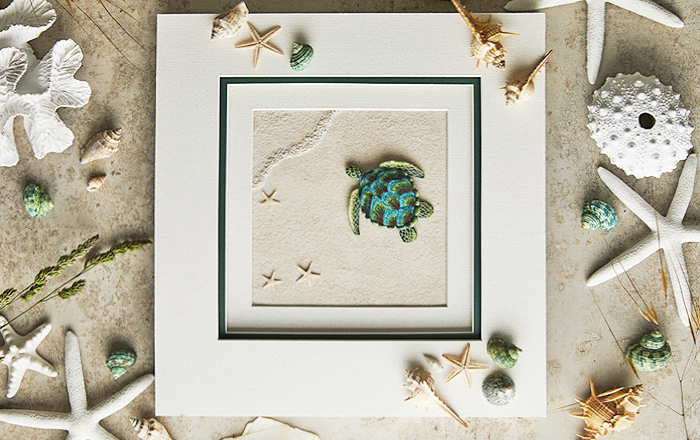
Creating animals in raised embroidery has always posed a challenge. Trying to find solutions to achieving the right shapes, the fine details and the textures of fur, feathers or scales has kept designers busy for centuries.
This has resulted in some very innovative techniques using materials as diverse as wire, ribbons, beads, leather, vellum, and even feathers and seashells.
In the 21st Century, designers are still pushing the boundaries of the technique and producing stunningly eye-catching stumpwork designs. Tiny Turtle from Inspirations issue #110 by Susan Casson is a project that didn’t just catch our eye, it also captured our hearts.
Susan has chosen a newly hatched green turtle as her subject. The tiny hatchling struggles towards the ocean after he has raised his little head out of the shell and has seen the big, exciting yet equally dangerous world about him.

Using a mix of stranded and perlé cottons, and combining stumpwork with surface embroidery, it’s hard not to fall in love with this intrepid little chap. His colouring is stunning – with the texture of his newly formed shell rendered to perfection with a gorgeous blend of blues and greens in long and short stitch.

His flippers are worked as separate slips along with his head. When all of the elements are brought together, each Tiny Turtle will display his own unique personality in the turn of the head, the twist of the flipper and the direction of the bright, beaded eyes.
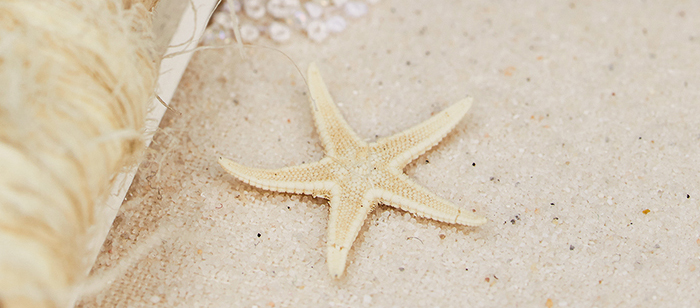
In order to create an added element of realism to the scene, Susan prepares the background fabric first by sprinkling sand onto glue. That way, there is no mistaking the fact that the Tiny Turtle is moving across the beach in his quest to reach the water’s edge – cleverly represented by working French knots at the corner of the frame.
Further realism is achieved by the addition of three starfish attached to the frame using transparent nylon thread.
In this way, Susan is carrying on the 17th Century tradition of creating an amazing stumpwork scene using whatever materials are most appropriate. It certainly makes this particular project unique.
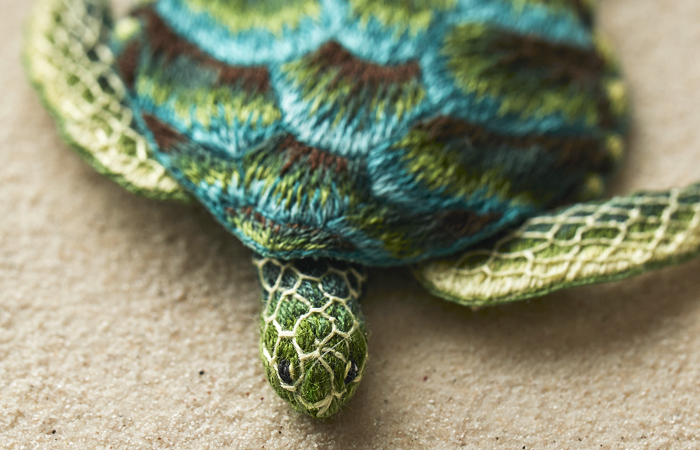
Tiny Turtle is a project that serves to remind us that textile art can incorporate many different kinds of materials. From the beautifully stitched shell to the carefully constructed flippers, and from the sandy background to the real starfish, this project is undeniably modern and yet completely traditional.
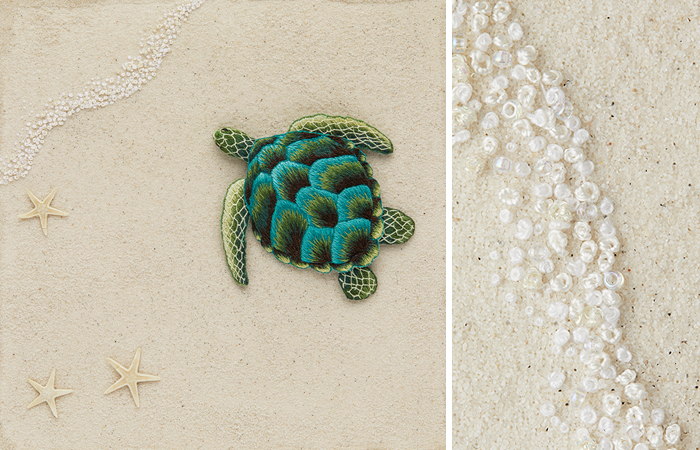
It will bring pleasure in all elements of its creation and will remain a project to be proud of once it is framed and mounted on the wall.
Make Your Own Tiny Turtle
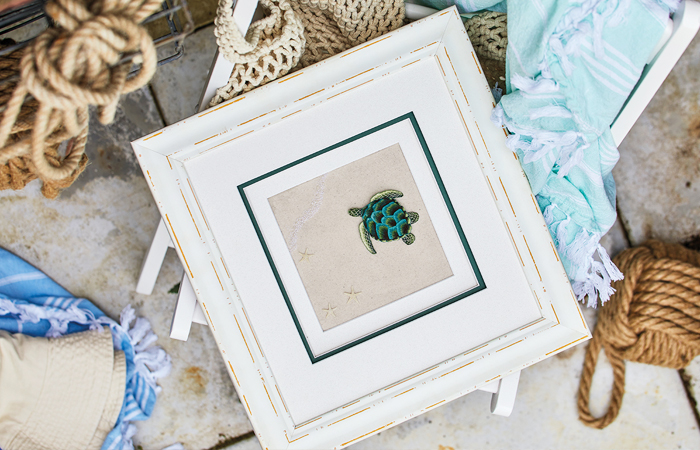
Step 1 – Purchase Project Instructions
Tiny Turtle by Susan Casson is a delightful green turtle hatchling in stumpwork approaching the water’s edge.
Inspirations Issue 110
Tiny Turtle – i110 Digital
Step 2 – Purchase Ready-To-Stitch Kit
The Inspirations Ready-To-Stitch kit for Tiny Turtle includes everything* you need to re-create this delightful scene: Fabrics (unprinted), wool felt, fibre-fill, sand, starfish, nylon & embroidery threads, beads and needles.
Tiny Turtle – i110 Kit
*Please Note: To cater for flexibility of purchase, instructions are not included with our kits. For step-by-step directions on how to create this project, please refer to the magazine/digital pattern.
